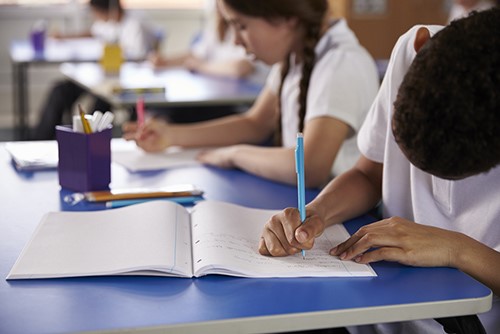Why sprinklers make sense in schools
Monday 21st August 2017
During 2016, the Dfe updated their Design in Fire Safety in Schools guidance - removing the requirement for school buildings to be fitted with fire sprinkler systems and thus reversing a policy introduced in 2007 which was designed to make schools safer in the event of fire.
Here at Rapidrop, we believe that sprinklers in schools don’t just protect buildings and equipment; they also safeguard children’s educations, wellbeing and, most importantly, their lives. Here are three important reasons sprinklers play such a vital role in fire safety for schools…
1. A school is more than just a building
According to research by the Chief Fire Officers Association there have been 5,132 fires in educational buildings between 2003/04 and 2013/14, resulting in 148 casualties. The Fire Protection Agency (FPA) estimate the cost of a fire in school to be in the region of £1.3million per incident. However, beyond the immediate losses and injury, a fire in school has ongoing economic and social implications, both for the children and for their wider community. When past work and irreplaceable coursework is destroyed or children have to be moved to inadequate temporary facilities, the impact on a child’s education can be profound and long-lasting.
2. Fire sprinklers can be a cost-efficient choice
It is estimated that the cost of installing sprinkler systems can add between 1.4% and 4.48% to construction costs. Whilst this is not an insurmountable cost, it may be possible to mitigate costs even further when sprinklers are included at design stage. By building sprinkler systems into building design, the cost of compliance with building regulations could potentially be offset by ‘trade-offs’ in the reduction of passive fire protection and other fire safety measures that would ordinarily be required by the building control authority. These may include:
- Longer travel distances
- Increased compartment sizes
- Reduced fire resistance in elements of structure
- Reduced requirement for automatic fire detection and manual call points
- Reduction in the number of self-closing fire doors
- Reduction in other fire-fighting equipment
3. Fire is a real and regular risk to schools
The statistics surrounding incidents of fire in schools make for quite disturbing reading: every week a school is lost to fire, with around 70% of fires started deliberately and direct losses alone totalling £100K each year. Despite this, a risk-based approach to fire safety in school buildings has now been rejected and under new regulations only buildings deemed “high-risk” will be required to install fire sprinkler systems. The result? Many schools are unfortunately left more vulnerable to a very real risk of extensive fire damage and - in the worst cases – injury or loss of life. One example of a school fire in which sprinklers were not present is Selsy Academy, West Sussex. Three quarters of the school buildings were lost to a blaze on 21st August 2016. The use of sprinklers could have meant a very different outcome and vastly reduced losses.

Installation and Design Guides
Guidance on the installation of sprinkler systems can be found in LPC Rules for Automatic Sprinkler Installations incorporating BS EN 12845: 2009 and the LPC Technical Bulletin 221: 2005: 1 Sprinkler protection of schools.
[Source: BAFSA]
Have a question? For more information about the use of sprinkler systems in schools or other public buildings, please get in touch and speak with one of our experts.
Our schoolchildren deserve the safety sprinklers provide
Tweet ThisLatest News Archive
-
Project Showcase: GLP Magnice - Poland
06/08/2024
We complete a variety of projects across the world in a range of sectors. In our latest pr…
-
Project Showcase: Eurovea Galleria Shopping Center, Slovakia
01/08/2024
With projects around the world including Rapidrop products, we offer an insight into what …
-
Project Showcase: Sava Centar in Serbia.
31/07/2024
Operating in over 75 countries around the world, Rapidrop products can be found in a wide …
-
Warehouse chooses Rapidrop K115 for their new location
19/06/2024
Our K115 sprinkler heads are ideal for commercial applications including warehousing or st…
-
Rapidrop Global Ltd is 'one to watch' for 2024
13/12/2023
It’s officially awards season for Rapidrop Global Ltd. Following the recent success at …